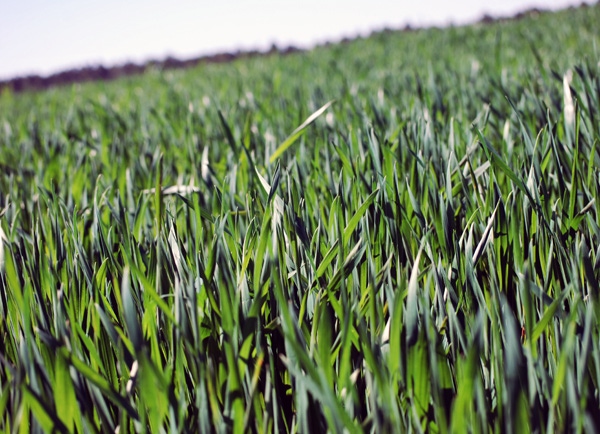
Plant growth regulators weren’t needed in North Carolina wheat this year due to the very cold winter, but there are times when they have a place in wheat production, according to Ron Heiniger, Extension cropping system specialist at North Carolina State University.
“You want to think about plant growth regulators when you are thinking about a fertility program,” Heiniger said at the 2015 Coastal Plain Small Grain Field Day at Forbis Farm in Lumber Bridge, N.C. April 23.
“You need to put pre-plant nitrogen on your wheat to optimize your yield. You do that because you don’t know what the weather is going to be. You don’t know if it’s going to turn cold and limit how much growth you are going to get,” he said.
For example, Heiniger said the winter of 2012 was mild in North Carolina and wheat grew faster with a pre-plant application of nitrogen. “It’s in years like that when your wheat gets ahead of you where plant growth regulators fit in,” he said.
Plant growth regulators also fit when farmers want to push nitrogen rates due to wet weather that can bring leaching and de-nitrification, Heiniger explained. “In years like that, applying pre-plant nitrogen alone won’t get you there; you’re going to have to apply more nitrogen at top dress than the standard rate,” he said.
To achieve maximum yields, wheat needs 150 pounds of nitrogen to cover nitrogen loss and cover plant growth, Heiniger explained. “The moment you consider top-dress nitrogen, that is when a growth regulator enters the picture,” he added. “The moment you think about a stronger nitrogen program on your wheat, that’s the moment you have to decide if you need a plant growth regulator.”
In research last year, N.C. State scientists found that plant height and tiller densities were reduced with the plant growth regulator Palisade.
“What happened was some of the small tillers that probably weren’t going to make it to heading stage were basically shut down so that growth regulator basically shuts down the growth of those tillers and prevents them from putting on a seed head,” he explained. “In many cases, in high yield levels, this isn’t a bad thing. But it is going to have some impact on tiller development in the crop.”
Heiniger said it is important for a plant growth regulator to pay for itself “so we can put some money back in our bank account after we pay for that treatment.”
He pointed out that plant growth regulators make a difference in yield when a very high seeding rate is used. Not much difference is seed with low or medium seeding rates, he added.
“Plant growth regulators are part of a high management strategy,” he stressed. “If you’re growing wheat for high yield you have to have in the back of your mind a strategy to control growth when you need it. When you have a warm year, when you have a very heavy dense wheat crop that’s growing fast, or when you have to use a little extra nitrogen, and you’re worried about a situation where perhaps you have carryover, that’s when you need a strategy to control growth.”
About the Author(s)
You May Also Like






